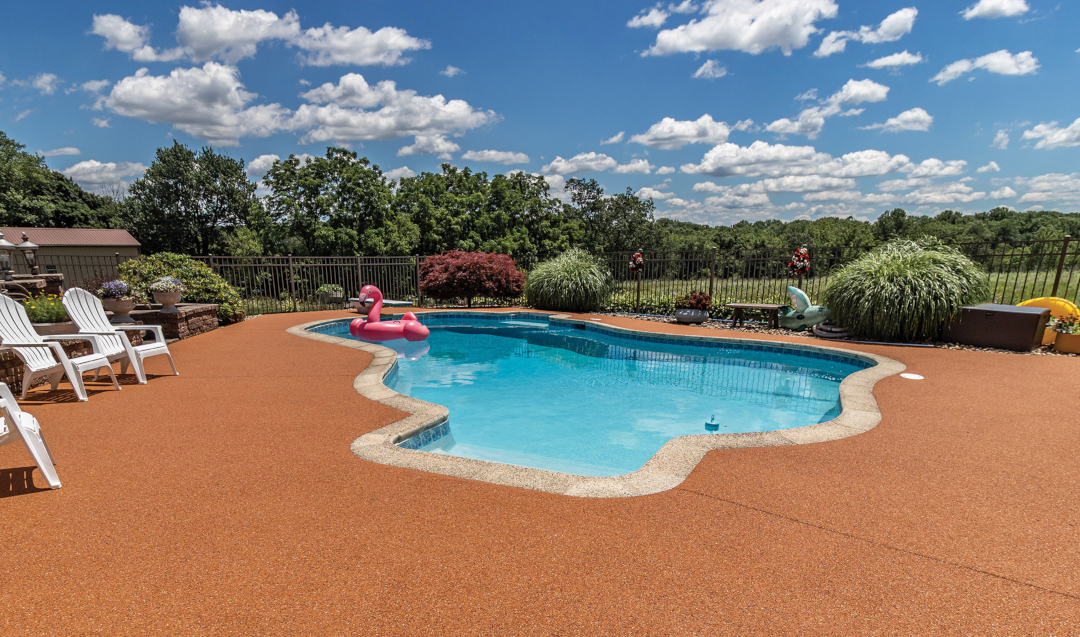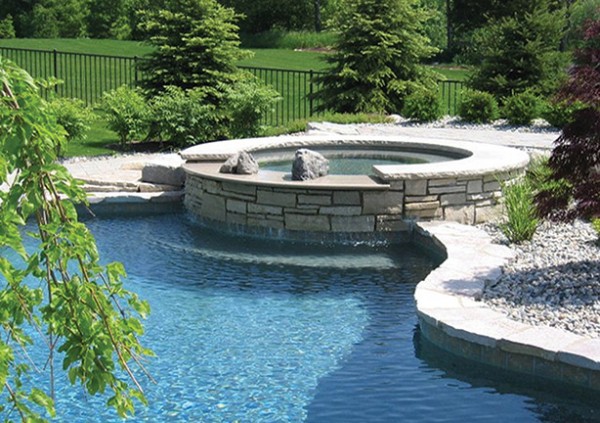Pre-Season Preparation

As the days get longer and signs of spring start announcing themselves in blooming pastels and singing birds, summertime days spent enjoying your backyard pool are never far behind.
But before those idyllic weekends and poolside parties make their seasonal return, assessing and preparing the pool at the center of your summer activity should be your No. 1 priority—and one that you shouldn’t delay handling, since professionals are still navigating an inundation of service requests.
“People should already be calling and scheduling their pool openings because everyone wants to be open by May 31, especially this year,” notes Walter Beyer, a co-owner of Stardust Pools, which, as one of the oldest pool companies in New Jersey, has seen trends come and go while some mistakes stubbornly persist. “We must have booked over 100 openings already for April and May. This year has already been like no other, and a big issue is not having enough workers.”
Some local experts in what it takes to begin your summer with a masterfully repaired, refreshed or renovated pool spoke to House & Home about what you can do to head into summer with a pool that’s as ready to greet the warmer weather as you are.
Avoiding Common Errors
Having professional assistance in opening your pool, no matter the type, can be invaluable in helping a first-time pool owner avoid reinforcing bad habits, as well as ensuring that longtime owners are up-to-date on the best and newest ways to preserve their investment. But if you’re calling on the experts, prepping their workspace is imperative.
“Basically, to prepare for someone to come out and open the pool, you need to pump the water off the cover, get the leaves off the cover, if possible, and put a hose under the cover to fill the pool all the way up so when we go out there, we can run the pool and it’s ready to go,” Beyer explains.
With a number of new pool owners opening their backyard swimming oases for the first time—Derek Blasker of Fiberglass Pool Designs says his company installed 131 last year alone—there’s a lot of potential for beginner mishaps that could put your pool out of commission until the necessary repairs are made.
“A pretty big rookie mistake when you’re starting back up for the year is draining all of your equipment, so when it comes time to turn everything back on, people forget to prime the pump by filling it up with water,” Blasker says. “They just flip it on expecting it to be able to create the suction pressure, and then they burn out the motor before the season even starts.”
Not all damage comes from a one-time blunder. Administering an incorrect chemical concentration can cause the kind of slow damage that creeps in over time. Blasker notes that the very chemicals meant to sanitize your pool can produce issues in the long term, especially if you eschew professional advice and keep making the same mistakes.
“People like to put their chlorine tablets into the skimmer, and it’s such a heavy concentration of chlorine flowing directly down that sometimes it will force the pipe itself to start to crush itself, so it starts to warp,” he says. “That will slowly deteriorate the pipes in your pool. It’s not going to happen instantly but, if no one ever tells you to stop doing that, it’s going to cause problems over a prolonged period of time. If you start early with something like a floater or an automatic chlorinator, that will prolong the life of your pipes.”
 Checking the Basics
Checking the Basics
A visual assessment is a good place to start, which will help you identify any necessary fixes—including a clogged pool filter, floating winter debris, liner damage, chipped tiles, wear and tear to your pool decking, and broken equipment—as well as their immediacy.
“Liners and covers tend to get rips or holes in them, safety covers especially if storms came through and branches cut through the cover, which you’ll need to replace,” Beyer says. “If there’s a hole in your liner, the water levels can get too low, and then the liners shrink. … A lot of people put off replacing or repairing their liners, and then they open up a pool and find out that this is the year they need to put a new liner in.”
You’ll also want to check your water’s chemical balances early in your reopening schedule. A water sample is a critical assessment of your pool’s health, and will guide you toward any necessary chlorine, calcium, alkaline or pH adjustments, especially since elements like sunshine and the acidity of rain can influence its chemical levels.
“When we open up a pool, we do free water testing,” notes Beyer. “We’ll take a sample that day, and the next day our office will call to tell you what you need to do to stabilize your pool and chemicals.”
Of course, it’s not just what’s inside your pool that matters: The decking around it is an important part of your swimming environment that requires care and attention, too.
Jason Larsen at Epoxy Floor Experts says that even the highest quality concrete will eventually show its age once it’s weathered enough cycles of seasonal extremes.
“The problem with concrete is that it cracks,” he says. “There’s nothing you can really do to stop that. You can keep the surface sealed as best you can, which might prevent some of the pitting, but as far as the heaving and the cracking, there’s not much you can do. That’s just the nature of the beast: When concrete cures, it shrinks, and when it shrinks it cracks.”
Repairs and Renovations
Harsh weather does account for inevitable maintenance projects, though substandard installation work can be the culprit, too. “We get people who call us because their concrete’s looking ugly and want us to come out and assess the situation,” Larsen says. “A lot of the heaving and the settling is usually because the substrate wasn’t installed properly.”
“There are sealers you can use,” Larsen adds, explaining that certain options and upgrades can alleviate some of that repair onus. “We fix concrete with other products, so we’ll resurface the whole area with either a stone or a rubber material, depending on the situation. If you have a lot of cracks or you can see that the slabs are moving constantly, then we’ll use our rubber product because that’s flexible: As the concrete moves, the rubber moves with it.”
If you’re eyeing your pool with a refresh rather than repairs in mind, custom features or architecture like waterfalls and lighting can certainly dress it up—though you’ll also have to follow those extra maintenance steps at the beginning and end of every season.
“It’s almost impossible to fully drain the waterfalls because you can’t just cap them off,” Blasker says. “A lot of the cascades are just a long strip with a bunch of little holes in it that the water flows out of, and there’s nothing you can really do to seal it off for the winter. If you don’t properly blow it out, and then cap it off at the valve, or you don’t put enough antifreeze in it, it’s all above-grade so you can really run into some issues there.”
Beyer also notes that concrete pools’ upgrades tend to focus on surfaces, like coping, tiling and finishes.
No matter your goals for your pool this summer, the guidance and hands-on know-how of the area’s pool professionals will keep your pool running … well, swimmingly with a professional pre-season inspection.
“When I’m done installing a pool, I go over everything with them: how to do their maintenance, what they need to put in it, when to check the chemicals, opening the pool, closing the pool,” Beyer notes. “We recommend a professional inspection right after your pool is open to make sure everything—your heaters, your pumps, your filters—is working and running properly. And, if you’re buying a house with a pool, make sure you get a pool inspection along with your house inspection.”
RESOURCES
Epoxy Floor Experts
Serving East and Central Pa.
(833) 243-8786
EpoxyFloorExperts.com
Fiberglass Pool Designs, LLC t/a Pool Designs
22 Route 130 Yardville, N.J.
(609) 324-9900
PoolDesignsInc.com
Stardust Pools
Serving all of N.J.
(732) 254-33301 | (800) 809-7665
Stardust-Pools.com
Published (and copyrighted) in House & Home, Volume 22, Issue 6 (March 2022).
For more info on House & Home magazine, click here.
To subscribe to House & Home magazine, click here.
To advertise in House & Home magazine, call 610-272-3120.
